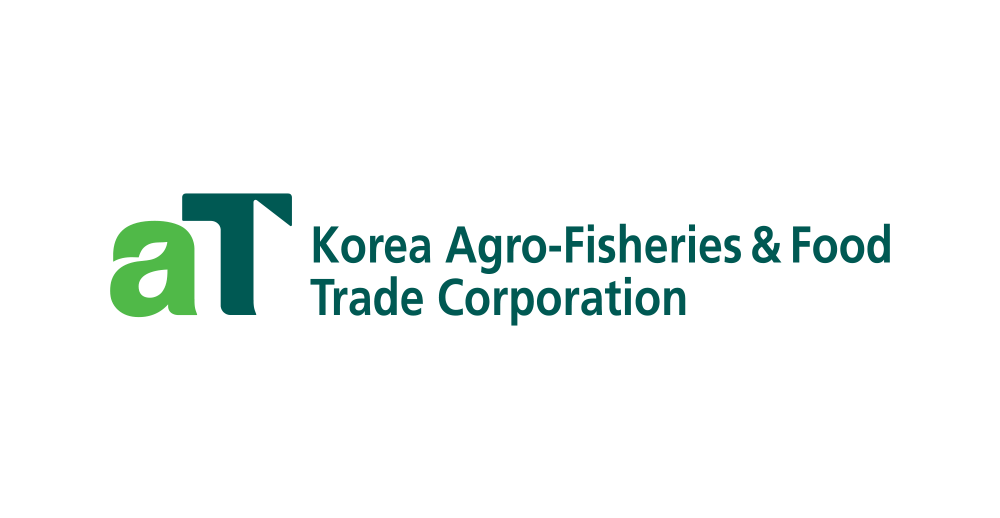Let’s talk about vertical farming—it’s changing how we grow stuff, especially in cities. Imagine significant tall buildings and growing lots of veggies inside them. Vertical farming is all about making farming work in the middle of the city.
Vertical farming is like a game-changer for farming. Instead of just using fields, it puts crops in tall buildings. It’s super cool because it helps us grow food in places with little space. This way, even big cities can have fresh, home-grown produce.
So, no more old-style farming limits. Vertical farming is like a green flag for being smart about how we grow food. It’s like saying, “Hey, let’s make farming work in the city too!” Stick around, and we’ll dive into how this new way of farming is taking root in our city landscapes.
Defining Vertical Farming

What is Vertical Farming?
Vertical farming isn’t your typical farm scene, with fields stretching into the distance. It’s more like a farm turned on its side or stacked like a tall building.
Imagine growing your veggies not just in the ground but on shelves or slanted surfaces, one layer on top of another. That’s what we call vertical farming.
So, let’s break it down.
Vertical farming is growing crops in vertically stacked layers or on surfaces that tilt upwards. It’s like farming but in 3D! Another way to describe it is stacked agriculture—think of it as farming with a vertical twist.
And if you hear someone talk about Multilayer Farming or Vertical Crop Cultivation, they’re talking about this excellent method of smartly growing food space.
In simple terms, vertical farming is about making the most of our space to grow more food.
Vertical Farming Systems

When we dive into vertical farming, it’s not just about growing crops differently; it’s about exploring various systems that make it all possible. Let’s take a closer look at the different vertical farming Systems that are changing the game in agriculture.
Tower Gardens:
- Tower gardens are vertical structures that stack up crops in a tower-like fashion.
- This system maximizes vertical space, making it a go-to choice for compact urban settings.
Hydroponic Farming:
-
- Hydroponics is a technique where plants grow without soil, using nutrient-rich water solutions.
- Vertical Hydroponic Farming takes this method to new heights by stacking layers of hydroponic systems.
Aeroponics:
- Aeroponics is a high-tech system where plants are grown in an air or mist environment without soil.
- The crop roots are getting a spa treatment, suspended in air and mist, for optimal nutrient absorption.
These different systems in Stacked Agriculture represent the diverse techniques embraced by vertical farming.
Whether it’s the space-efficient tower gardens or the soilless wonders of hydroponics and aeroponics, each system contributes to sustainable crop cultivation in its unique way.
Advantages of Vertical Farming
Space Efficiency in Vertical Farming
Vertical farming isn’t just about growing crops; it’s about growing smartly, especially when dealing with limited space.
Let’s delve into how vertical farming champions the art of space-efficient farming, making it a perfect match for the dynamic landscapes of urban environments.
Urban Crop Cultivation:
- Vertical farming brings agriculture to the city’s heart, turning urban spaces into lush green pockets of cultivation.
- Skyscrapers and urban warehouses become thriving hubs for growing crops, bringing the farm closer to the people.
Maximizing Farming Space:
- Vertical farming utilizes space by growing crops in vertically stacked layers, effectively using horizontal and vertical dimensions.
- It’s not just about utilizing the ground; it’s about maximizing every inch in height, transforming each level into a potential space for growing crops.
Space Optimization in Vertical Farming:
- The philosophy revolves around intelligent space usage, ensuring that each level contributes significantly to a flourishing crop ecosystem.
- Vertical farming optimizes farming space from the floor to the ceiling, presenting an efficient and sustainable solution.
- Vertical farming in cities is not a futuristic vision but a practical and transformative approach to redefining how we perceive and practice agriculture.
Resource Conservation in Vertical Farming

In the landscape of sustainable agriculture, vertical farming takes center stage by not just growing crops efficiently but also by conserving crucial resources.
Let’s explore how vertical farming is a champion in resource-efficient farming, particularly when preserving water and land.
Water Conservation:
- Vertical farming embraces clever irrigation methods like hydroponics and aeroponics, minimizing water usage.
- By delivering water directly to the roots, this method ensures that every drop counts, making vertical farming a leader in water conservation.
Land Preservation:
- Unlike traditional farming, which requires vast expanses of land, vertical farming operates vertically, optimizing space and reducing the need for extensive land use.
- It’s not about spreading out; it’s about increasing and enabling sustainable crop production without sacrificing valuable land.
Sustainable Resource Use:
- Vertical farming epitomizes sustainable use of resources by efficiently utilizing water and land, contributing to a more eco-friendly and resilient agricultural model.
- This approach aligns with the broader benefits of vertical farming, where every resource is thoughtfully conserved for long-term sustainability.
Year-Round Crop Production in Vertical Farming
One of the standout advantages of vertical farming is its ability to defy the limitations imposed by seasons, offering a continuous and reliable supply of crops throughout the year.
Let’s delve into the critical aspect of Continuous Crop Cultivation and the seasonal independence that makes vertical farming genuinely exceptional.
All-Season Farming:
- Vertical farming operates irrespective of the season, ensuring that crops can be grown consistently without the constraints of weather changes.
- This all-season approach guarantees a reliable and uninterrupted flow of fresh produce, regardless of external climatic variations.
Year-Round Crop Harvesting:
- Year-round crop harvesting is at the core of vertical farming, as it allows for continuous harvesting without waiting for specific seasons.
- This meets the constant demand for fresh produce and provides farmers with a predictable and sustainable crop harvesting schedule.
Vertical farming’s ability to offer uninterrupted crop production and year-round harvesting is a game-changer.
Vertical Farming Technologies
Hydroponics and Aeroponics in Vertical Farming
Vertical farming technologies, Hydroponics, and Aeroponics take center stage, revolutionizing traditional soil-based cultivation. Let’s delve into these advanced farming techniques that enable soil-less crop cultivation in vertical farming.
Hydroponic Farming:
- Hydroponics is a groundbreaking system where plants grow without soil, with their roots submerged in nutrient-rich water solutions.
- In vertical farming, Hydroponic systems are vertically stacked, optimizing space and maximizing water and nutrient efficiency.
Aeroponic Systems:
- Aeroponics takes soil-less farming to new heights by suspending plants in an air or mist environment, where nutrient-rich solutions are sprayed directly onto the roots.
- In vertical farming, Aeroponic systems provide an efficient and resource-conscious way to cultivate crops in a controlled environment.
These advanced farming techniques, marked by soil-less crop cultivation, showcase the innovative spirit of vertical farming.
Controlled Environment Agriculture (CEA) in Vertical Farming
Controlled Environment Agriculture (CEA) plays a pivotal role in the landscape of vertical farming, orchestrating optimal conditions for crop growth.
Let’s explore how CEA techniques are harnessed in vertical farming, creating controlled environments that redefine precision agricultural technology.
Precision Agriculture:
- Controlled Environment Agriculture epitomizes precision, ensuring every variable crucial to crop growth is meticulously controlled.
- In vertical farming, precision agriculture techniques are applied vertically, creating tailored environments for each level of crops.
Environmental Control in Farming:
- CEA in vertical farming extends beyond traditional farming limitations, offering precise control over temperature, humidity, and light.
- This level of environmental control ensures that crops receive tailored conditions, promoting optimal growth and resource utilization.
These CEA techniques in vertical farming showcase a commitment to creating controlled environments for crop growth.
Automation and Robotics in Vertical Farming

Photo Credit: ClaudeAI.uk
In vertical farming, we’re taking farming to a whole new level with the help of automation and robotics. These foodtech solutions are like competent helpers, making growing crops more efficient and productive.
Let’s see how they work together to revolutionize how we cultivate crops in vertical farms.
Vertical Farming Automation:
Automation in vertical farming makes things easier by handling tasks from planting to harvesting. It takes out the manual work, ensuring everything happens smoothly and accurately.
Robotic Crop Cultivation:
Robots are like farm assistants who help plant seeds, keep an eye on the crops, and even harvest. In vertical farms, these robots ensure everything is done precisely, leading to better harvests and less food-related waste.
Agricultural Robotics:
Combining automation and robotics in farming results in unique robots designed to work well in vertical farms. These technologies are making farming more innovative, helping us grow crops in a way that’s efficient and good for the environment.
Including Automation and Robotics in vertical farming is a big step forward, making farming more innovative and productive.
Challenges and Considerations
Initial Investment in Vertical Farming
Starting a vertical farming setup faces a significant hurdle: the upfront costs. Let’s discuss the money and initial expenses needed to get a vertical farm up and running.
Vertical Farming Investment
- Getting a vertical farm going means putting a lot of money into building structures, getting high-tech gear, and setting up systems for practical farming.
- The investment in vertical farming is a big deal and directly impacts the farm’s feasibility and success.
Initial Costs:
- Initial costs cover everything from constructing vertical structures to installing advanced equipment and getting systems in place for a controlled farming environment.
- Knowing and managing these Initial Costs is crucial for new vertical farmers to handle the financial challenges of starting up.
Financial Considerations in Stacked Agriculture:
- Financial considerations in stacked agriculture go beyond the day-to-day costs and dig into the bigger money plan needed for long-term success.
- Tackling the initial investment’s challenges is crucial in ensuring the money plan matches the goals and success of the vertical farming venture.
Dealing with the initial investment challenge is a big step in building a solid foundation for a vertical farming venture.
Energy Consumption in Vertical Farming
When it comes to vertical farming, one of the things we need to talk about is how much energy it uses. Let’s dive into the considerations around energy consumption in vertical farming and what’s being done to make it more sustainable.
Energy-Efficient Vertical Farming:
- Vertical farming relies on various technologies, some of which use much energy. Finding ways to make these systems more energy-efficient is crucial for sustainability.
- The goal is to balance the benefits of vertical farming with energy-efficient practices to minimize its overall environmental impact.
Sustainable Practices:
- Incorporating sustainable practices in vertical farming involves using energy wisely and exploring alternative energy sources.
- The focus is optimizing energy use, ensuring that the energy needed for vertical farming operations aligns with environmentally responsible practices.
Optimizing Energy Use:
- Optimizing energy use means finding ways to maximize the energy we put into vertical farming.
- Sustainable energy practices play a significant role in ensuring that vertical farming doesn’t become a strain on our energy resources.
Considering and managing energy consumption is crucial to making vertical farming productive and sustainable.
Conclusion
Let’s sum up what we’ve learned. It’s not just about growing crops; it’s about doing it in a way that’s good for the environment and sustainable for the long term.
It has challenges, like the money needed to start and the energy it uses. But it’s also solving problems, like providing fresh food all year round and using less land.
To wrap it up, vertical farming is a big deal. It’s not just growing food; it’s about growing it to keep the planet healthy. As we move forward, it will show us how to grow our food and take care of the Earth simultaneously.





























